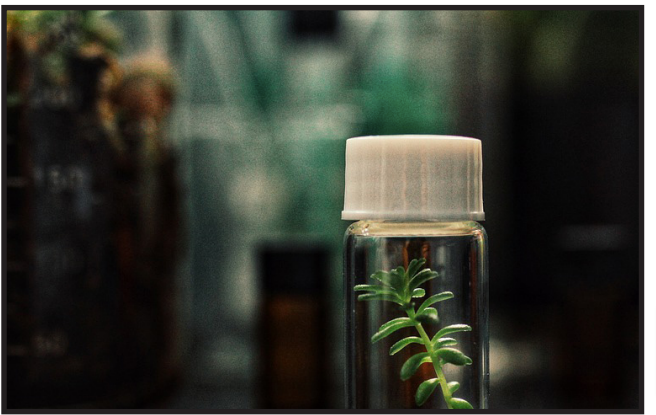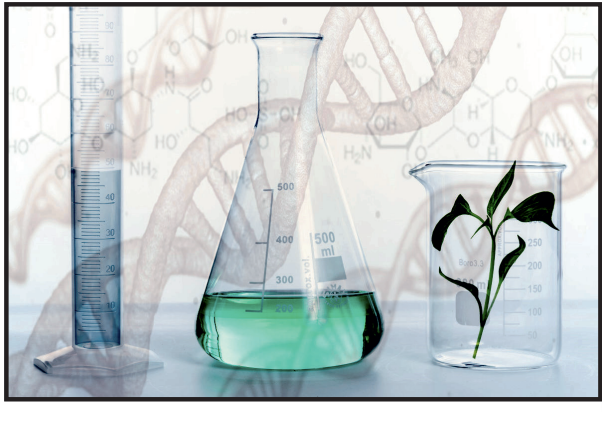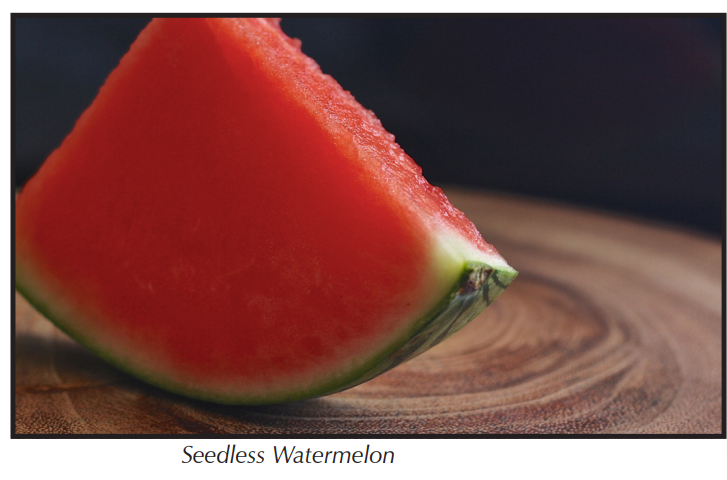The Ecosystem of GM Foods
Laws, Conventions and Controversies
Swapna Jha*
The term Genetically Modified (GM) crop refers to a process by which genes are added or removed from plants using genetic engineering techniques. A GM plant is created by introducing new DNA1 into the cells of the said plant. These cells are artificially nurtured in tissue culture where they transform into plants. The seeds of these plants will have the new DNA. At its simplest, GM foods are those whose genetic material has been modified

through the introduction of a gene from a different organism, via processes that do not occur naturally2.
The ‘Gene Guns’ method is the most common way of inserting DNA into plant cells. Other techniques include electroporation (using high voltage electric shocks), microinjection (using a thin needle) and agrobacterium gene transfer. There are three types of genetic modification: transgenic (plants with genes from other species), cis-genic, (plants with genes of the same species) and sub generic (altering the genetic makeup without incorporating foreign genes). These have been used to produce a wide variety of GM foods, from corn resistant to larval pests to soybeans resistant to weed-killers, in addition to GM maize for animal feed, high-fructose corn syrup, high yielding cotton and canola oil.
GM crops were grown in only six countries in 1996, which increased to 25 countries by 2009. Currently more than 70 countries import or grow Genetically Modified Organisms (GMOs) on 2.53 billion hectares, according to the International Service for the Acquisition of Agri-biotech Applications. About 90 percent of GMO cultivation is in five countries, viz the United States, Brazil, Argentina, Canada, and India. Most GM crops have been developed for insect resistance, herbicide tolerance, food fortification such as introducing Vitamin A in ‘golden rice’ and ‘golden banana’, or an increased starch content in potato.3
International Convention
The Convention on Biological Diversity (CBD) is a multilateral treaty under the mandate of the United Nations that came into effect in December 1993. The treaty focused on biodiversity conservation and the fair and equitable sharing of benefits from genetic resources, and requires member countries to enact domestic legislation. India is a party to the convention and we enacted the Biological Diversity Act in 2002. The CBD, which opened for signature at the Rio Earth Summit in 1992, has two supplementary agreements: the Cartagena Protocol and the Nagoya Protocol.
Currently more than 70 countries import or grow GMOs on 2.53 billion hectares
The Cartagena Protocol on Biosafety is a regulatory framework for the safe handling, transfer, and use of Living Modified Organisms (LMOs). The protocol was adopted in the year 2000 and the requisite 50

sovereign instruments of ratification were reached in 2003. Currently, 173 countries are parties to the Protocol. It has established rules and procedures to protect biodiversity from LMOs, especially those that may have adverse effects on human health.4
The Nagoya protocol was adopted at Nagoya, Japan in 2010 and came into force four years later.
This protocol provides a legal framework that addresses the second concern of the CBD, namely an equitable sharing of the benefits arising from genetic resources. The protocol obliges members to adopt measures to access and share the benefits of genetic resources. It lays particular emphasis on protecting from exploitation the traditional knowledge practices of indigenous communities. Genetic resources from animals, plants, and microorganisms can be used as base material for specialty enzymes, small molecules and enhanced genes. These have applications in drug development, crop protection, chemical production and industrial processing. India signed the Nagoya Protocol in 2011 and ratified it the next year.5
The parties to the protocol are obliged to introduce the following measures:6
Access to Genetic Resources
- Access should have legal certainty and transparency. The rules and procedures should be fair and nonarbitrary.
- There should be clear rules for informed consent and mutually-agreed to terms.
- The rules should have provisions for the issuance of a permit.
- Research that conserves biodiversity should be encouraged.
- Emergencies that threaten plant, animal, or human health should be considered.
- Genetic resources for food and agriculture that provide food security should be considered important.
Benefit-sharing
- Measures for the fair and equitable sharing of benefits with the contracting party that provides genetic resources.
- Sharing should be on mutually-agreed terms.
- Benefits could be non-monetary or monetary. Benefits could be in the form of royalties and/or sharing of the results of the research.
Compliance
- Legal provisions for the implementation of the protocol.
- Dispute resolution mechanisms.
Legal Framework in India
India has laws to control threats to human safety and biodiversity from the development, cultivation of GM crops and their trans-border movement. These include:
- The Environment (Protection) Act, 1986
- Rules for the Manufacture, Use, Import, Export and Storage of Hazardous Micro-organisms/Genetically Engineered Organisms or Cells,1989
- Drugs and Cosmetics Rules - 1988 (eighth amendment)
- Schedule Y of the Drugs and Cosmetics Act
- Protection of Plant Varieties and Farmers’ Rights Act, 2001
- Biological Diversity Act, 2002
- Food Safety and Standards Act 2006
- Plant Quarantine Order, 2003
- GM policy under Foreign Trade Policy
Regulatory Mechanisms in India
The Biotechnology Regulatory Authority of India Bill was introduced in the Lok Sabha in April, 2013 by the Ministry of Science and Technology. It was referred to a standing committee, which was supposed to submit its report in June, 2014. However, the bill has lapsed due to the dissolution of 15th Lok Sabha.
There are five government authorities responsible for all the aspects of GM products: Institutional Biosafety Committees (IBSC), Review Committee of Genetic Manipulation (RCGM), Genetic Engineering Approvals Committee (GEAC), State Biotechnology Coordination Committee (SBCC) and District Level Committee (DLC). The GEAC – part of the Ministry of Environment and Forests - is the apex body that grants permits for open field trials of GM crops and approves them for commercial release.
Controversies associated with GM Crops in India
Many people believe that GM crops are not riskier to human health than non-GM food even though it cannot be said with certainty without adequate tests and long-term field trials. However, opponents have objected to GM crops on the grounds of their harmful impact on the environment, lack of safety of GM foods, unethical business interests behind GM crops, and inadequacy of intellectual property rights.
Proponents argue that the GM technologies have been around for about 15 years in countries such as Brazil and China. Norman Borlaug – the father of the Green Revolution – in 2005 said that GM food could help eradicate world hunger. “It is better to die eating GM food instead of dying of hunger,” said the Nobel laureate.
The first GM crop in India was Bt cotton, introduced in 2002. Four years later a petition was filed by some activists in the Supreme Court. In 2012, a Parliamentary Committee on Agriculture asked for an end to all GM field trials in the country. Crop trials were kept on hold since 2012 after a Supreme Court appointed panel recommended a moratorium on GM crop trials for ten years, until regulatory and monitoring systems were strengthened. The then environment minister Jayanthi Natarajan followed the advice.
In 2014 her successor, Veerappa Moily, cleared the way for trails. Although his two predecessors had stalled it, Moily approved one-acre field trials. Field trials for 11 crops were green lit in the last few months of the UPA-2 government. These included maize, rice, sorghum, wheat, groundnut and cotton.

In July, the NDA government approved trials for 21 engineered crops such as rice, wheat, maize and cotton. The GEAC, consisting mostly of bio-technology supporters, rejected only one of these proposals while six others were rejected for want of necessary information.
In 2016, the GEAC gave the green signal to GM Mustard for field trials, but the Supreme Court stayed that order. A year later the committee was asked to conduct more studies. In October 2022, the GEAC once again cleared the proposal for the commercial cultivation of GM mustard. The GEAC’s recommendation will go to the Environment Ministry for approval. Presently, as many as 20 GM crops are undergoing trials at various stages.
What’s wrong with GM crops?
“Those who advocate for the use of GMOs like to point out that there’s no evidence of harm”, said Michael Hansen, a scientist at Consumer Reports. “But that’s not the same as having evidence that shows that GMOs are safe. The studies needed to determine long-term safety haven’t been done. There’s a lot we don’t know.”7 Obviously, the opinion is at best divided on the subject.
Civil society organisations working with farmers – particularly organic farmers - oppose GM crops. A cause of concern is that without mandatory labelling GM foods may be mistaken for organic produce. Various groups have expressed personal, ethical and cultural objections. For instance, animal genes in plants may cause vegetarians/vegans discomfort. Even among those who eat meat, several items are religiously proscribed. This indicates a necessity to distinguish GM foods from their non-GM counterparts, which can only be done via labelling.8
There is also a possibility that a GM crop may not have the same nutritional value as the natural product. It may have increased or decreased certain nutrients, but it could also be counter-productive. While in-depth research is needed on the long-term effects of GM foods, many experts agree that genetic modification has the potential to introduce new allergens and toxins.
One such instance was observed in the United States. Genes from Brazil nuts were inserted into soybeans to improve protein content in the latter. It was later found that the GM soybeans likely caused acute reactions in people allergic to Brazil nuts. This product was later discontinued, but not before demonstrating that the absence of safety approvals and labelling as well as a lack of research into longterm health effects could put lives at stake.9 The British Medical Association also claimed that antibiotic resistant marker genes compacted into certain GM crops could be transferred to disease-causing microbes in the gut of humans or animals, creating antibiotic resistant microbes.10
The patenting of GM foods has raised concerns that bio-engineering commodifies life and violates its sanctity. For example, seed rights are supposed to vest with farmers, but terminator seeds force farmers to purchase afresh every year from monopolistic multinationals. Farmers in developing countries obviously end up paying a heavy cost.

GM foods can also pose a threat to traditional farming practices and regional bio-diversity. The National Rice Research Institute notes that 946 varieties of rice are cultivated in India.11 Each variety has a different cultural and religious significance. However, commercialised transgenic crops may disrupt their cultivation and even lead to the wiping out of some varieties.
Over and above this, environmental concerns have arisen on superbugs and super weeds which can resist pesticides. Such transgenic plants could facilitate the generation of new viruses in the environment. Further investigation is required to determine if residues from herbicides and pest resistant plants could harm organisms found in the surrounding soil, such as bacteria, fungi, and nematodes.12 It is also feared that GM crops may introduce toxins into the food chain. Ironically, chemical companies that sell weed killers are a driving force behind GM foods.13
A joint commission of the World Health Organization and the Food and Agriculture Organization has established a protocol for evaluating the safety of GMOs. European countries and other developed nations have incorporated those guidelines into their mandatory premarket safety assessments for GMOs. Nevertheless, there’s still no legal barrier to prevent foods containing ingredients that come from potentially risky genetically modified crops from ending up on our plates.14
Conclusion
Some of the most important points about GM crops and their effects in India were raised by the The 59th report of the Parliamentary Standing Committee on Agriculture. These were debated extensively among the scientific and farming communities even though the issue still remains undecided and contentious. Some of the main observations of the Report15 are summarised below:
- Research and development on transgenics in agricultural crops should be done only in strict containment and field trials should not be undertaken till the Government puts in place all regulatory, monitoring, oversight, surveillance and other structures.
- Regulatory mechanism had missed the 30 percent increase in toxic alkaloid in Bt brinjal and approved it for environmental release but these could have devastating effects on environment and human as well as livestock health.
- A through and independent probe must be conducted into the Bt brinjal matter from the beginning up to the imposing of moratorium on its commercialisation by a team of eminent and independent scientists.
- There should be no compromise, even remotely on the human health and environment by the use of antibiotic-resistance marker in GM crops, as there could be a possibility of transfer of antibiotic resistance marker genes from GM crops to other organisms. Hence, the Government should formulate appropriate policy in this regard.
- Same set of people should not be involved in development of technologies/products and also in assessment, evaluation and approval. Accordingly, the Government should make changes in the composition of regulatory bodies.
- It was recommended to evolve a process of examining domestic laws to determine whether domestic rules and procedures already exist that address potential damage, as defined in Article 2 of the NagoyaKuala Lumpur Supplementary Protocol. The Committee desired that purposeful and definitive action be initiated towards adopting and implementing sustainable and environment-friendly practices and technologies in agriculture and allied sectors, which will conserve biodiversity and also ensure safety of human health and livestock health. The Committee also suggested a monitoring mechanism regarding safety of food items imported into the country.
- The Committee also recommended a liability clause or mechanism in the system which could compensate the poor farmers and the consumers in the eventuality of crop loss and harm to biodiversity health, environment, etc. and urged the Government to take appropriate action in this regard.
A well-known global report initiated by the World Bank and the Food and Agriculture Organization (FAO) that assessed the impacts of past, present and future agricultural knowledge, science and technology on hunger, livelihoods, human health, and sustainable development nails the issue quite succinctly:
“Biotechnology has always been on the cutting edge of change. Change is rapid, the domains involved are numerous, and there is a significant lack of transparent communication among actors. Hence assessment of modern biotechnology is lagging behind development; information can be anecdotal and contradictory, and uncertainty on benefits and harms is unavoidable. There is a wide range of perspectives on the environmental, human health and economic risks and benefits of modern biotechnology; many of these risks are as yet unknown.”16
Endnotes
- World Health Organisation. Food, Genetically modified. Retrieved December 26, 2022 from bit.ly/3CGWzHw
- ISAAA. (2022, June 30). Global Status of Commercialized Biotech/GM Crops in 2017: Biotech Crop Adoption Surges as Economic Benefits Accumulate in 22 Years. Retrieved December 27, 2022, from https://bit.ly/3ZtTGnr
- Mrema, E. M. The Cartagena Protocol on Biosafety. Biosafety Clearing-House. Retrieved January 2, 2023, from https://bit.ly/3Zpb4K9
- Convention on Biological Diversity. (2011). Nagoya Protocol on Access to Genetic Resources and the Fair and Equitable Sharing of Benefits Arising from their Utilization to the Convention on Biological Diversity. Retrieved January 12, 2023, from https://bit.ly/3kf4Jk0
- Convention on Biological Diversity. (2015). About the Nagoya Protocol. Retrieved January 1, 2023, from https://bit.ly/3ID9Uoh
- Id.
- Islam, R., Parvin, A., Billah, M.M., Islam, M., Imran, M.A.S., Sarker, R.K., Uddin, M.E., Alam, M.S. and Abedin, M.Z. (2020). Assessment of the Effects of Genetically Modified (GM) Foods: A Brief Study on Health and Environmental Concerns. Journal of Materials and Environmental Science ISSN: 2028-2508, 11(10), 1676-1688. Retrieved January 2, 2023, from https://bit.ly/3X3xSxq
- What You Must Know About GMOs and Your Health. (2014, October 23). Consumer Reports. Retrieved January 1, 2023, from http://bit.ly/3XarJ2l
- Kramkowska, M., Grzelak, T., & Czyzewska, K. (2013). Benefits and risks associated with genetically modified food products. Annals of agricultural and environmental medicine : AAEM, 20(3), 413–419. Retrieved December 27, 2022 from https://bit.ly/3WdpIkU
- Supra Note 7
- ICAR- National Rice Research Institute, Cuttack. (2021, August 9). Popular NRRI varieties – National Rice Research Institute. ICAR-NRRI. Retrieved January 1, 2023, from https://bit.ly/3Gz0VBO
- Steinbrecher, R. A. (1996). From green to gene revolution: the environmentally risks of genetically engineered crops. The Ecologist, 26(6), 273+. Retrieved December 28, 2022 from https://bit.ly/3X3raap
- Id.
- Ministry of Agriculture (Department of Agriculture and Cooperation). (2014, March). Cultivation of Genetically Modified Food Crops – Prospects and Effects. Retrieved January 2, 2023, from https://bit.ly/3kc1Mke
- Id.
- International Assessment of Agricultural Knowledge, Science and Technology for Development. (2009). Executive Summary of the Synthesis Report. Retrieved January 3, 2023, from bit.ly/3iEkNM4
NEXT »



